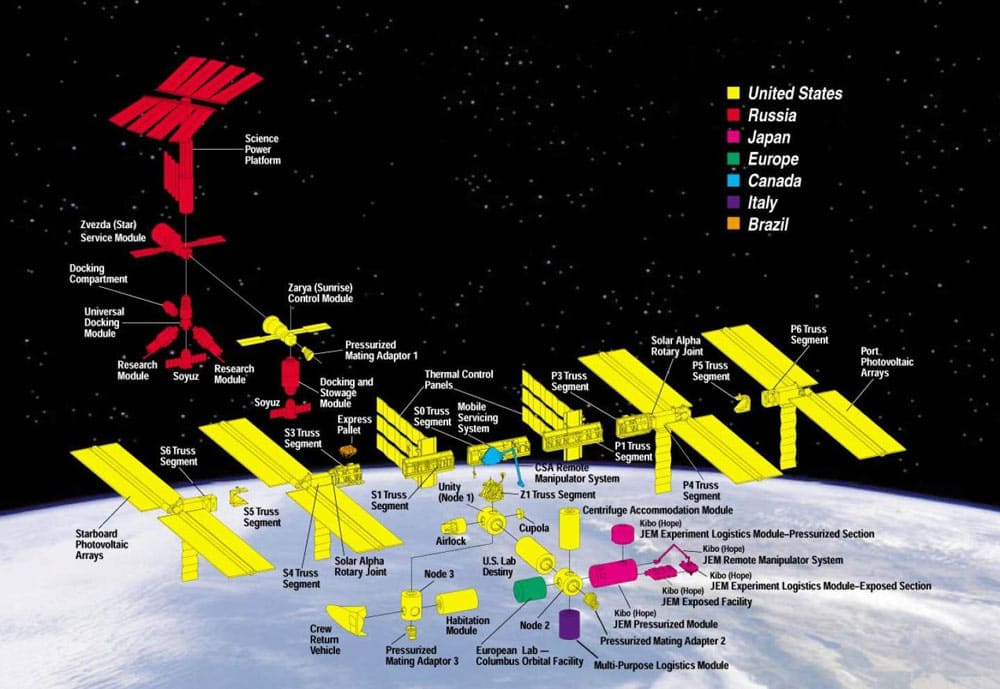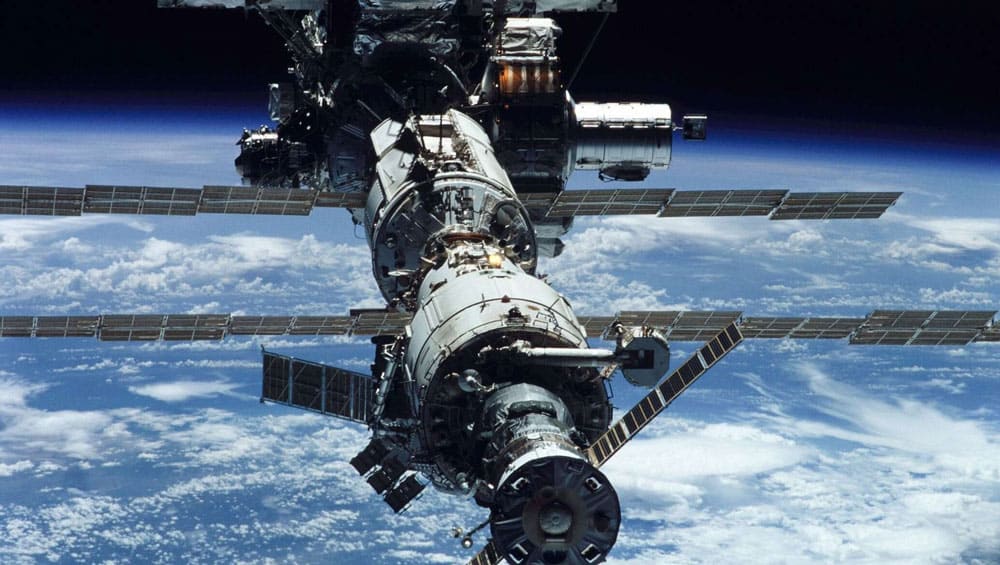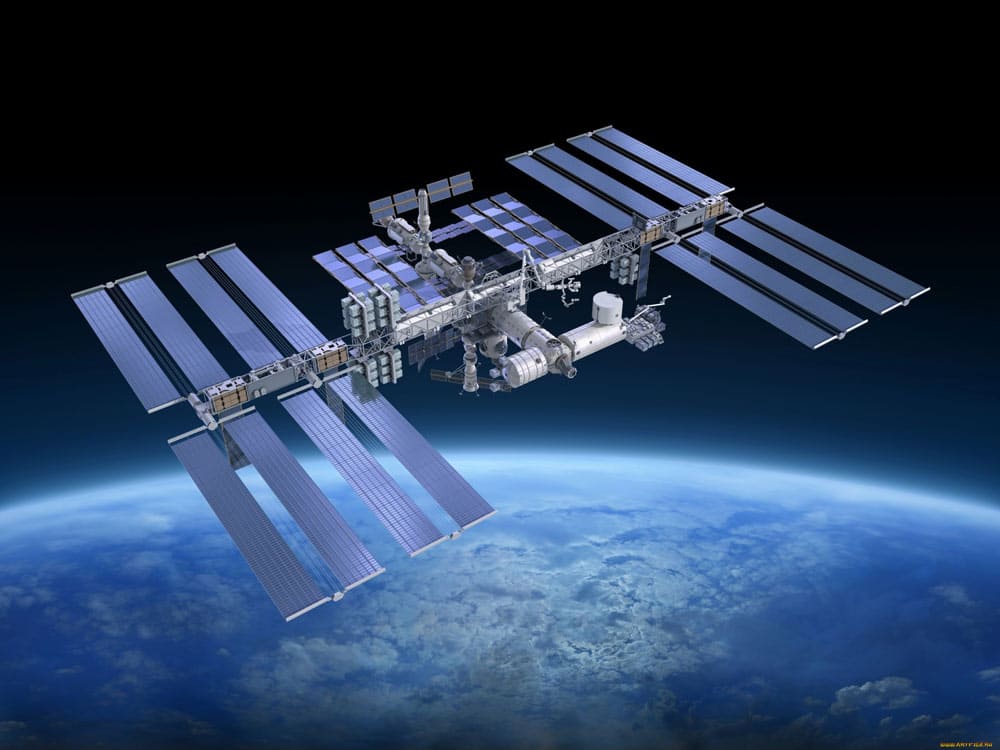The International Space Station is one of the few global projects in which the Americans and Russians have actually cooperated with other space agencies.
After taking more or less tentative steps on their own with Salyut, Skylab and Mir, the most powerful nations have come to realise that there are many advantages to working together in space.
In addition to sharing development and maintenance costs in a more equitable way, a common space station offers advantages such as access to each country’s research results.

The International Space Station (ISS) is the result of a collaboration initiated in 1998 between NASA (USA), Roscosmos (Russia), JAXA (Japan Aerospace Exploration Agency), ESA (European Space Agency) and CSA (Canadian Space Agency).
Creation of the International Space Station
The International Space Station is a space station made up of many independent modules that can be connected and disconnected at any time without compromising the functionality of the whole.
Construction of the ISS began in 1998 with the launch of the first Zarya module on a Russian Proton-K rocket and was scheduled for completion in 2004 or 2005. The tragic loss of the US shuttle Columbia in February 2003, which killed all seven astronauts on board, forced NASA to postpone other space missions in order to complete the ISS by 2011.
The ISS has both pressurised modules, where astronauts can live without spacesuits, and non-pressurised modules, where the use of spacesuits is mandatory. In addition to the modules, the ISS has solar panels for power, and a Soyuz spacecraft is permanently attached to the station to evacuate the astronauts on board in the event of an accident.

The International Space Station is often compared to a football pitch in size: 108.5 metres long, 72.8 metres wide and about 20 metres high. The total area of the pressurised modules is 837 square metres and the mass of the station is an impressive 450 tonnes.
The station orbits the Earth 15.51 times a day at an altitude of 330 to 435 kilometres and is powered by the engines of the Russian Zvezda module.
The International Space Station contains many systems that support life on board. In addition to systems that provide an atmosphere similar to Earth’s, there is a water supply system, food supply facilities and sanitation equipment.
Goals of the International Space Station
During the implementation of the ISS project, all the parties involved signed a contract defining the main objectives of the station’s construction. The ISS is seen as a laboratory, an observation point and a factory in space.
The areas in which scientific research can be carried out on the ISS are many and varied, but perhaps the most interesting aspect is the possibility of carrying out various experiments in microgravity.
At the altitude at which the ISS is located, gravity is close to that on Earth, but objects are falling almost continuously, so that they appear to have no mass at all and to be floating.
This has allowed the project countries to analyse the effects of this condition on the evolution and development of plants and animals. It is also possible to study the effects of microgravity on humans, an important element in identifying possible health problems that may arise during long expeditions to Mars.
Microgravity also allows researchers to discover new medicines. On the ISS, for example, liquids can be mixed at will because they have similar masses, unlike on Earth where, for example, oil cannot be mixed with water.
Research is also being carried out into superconductivity, a phenomenon in which the electrical resistance of a material is zero when it reaches a certain temperature.
In addition to microgravity experiments, the ISS is also enabling new research in other sciences. Astrobiology, for example, is investigating how plants can survive in space, while medicine is another important area where new drugs are being tested.
Last but not least, space weather can be analysed much better from the ISS due to the lack of atmosphere. Last but not least, humans can better analyse climate change on Earth because they have a general understanding of the planet and can initiate certain specific experiments.

One of the most interesting experiments is the Alpha Magnetic Spectrometer (AMS). This is a module on the ISS designed to measure antimatter in cosmic rays and identify dark matter. In 2003, researchers announced that they had detected the first signs of dark matter, but that further analysis was needed to complete the experiment.
Conclusions
The International Space Station is the most ambitious multi-country project ever undertaken and has contributed to a number of discoveries and scientific experiments that would not normally be possible on Earth, particularly those related to the effects of microgravity.
Unfortunately, the current political tensions between Russia and the USA may put an end to the ISS, but until then it is not impossible that the space station will bring new news from the world of science.


